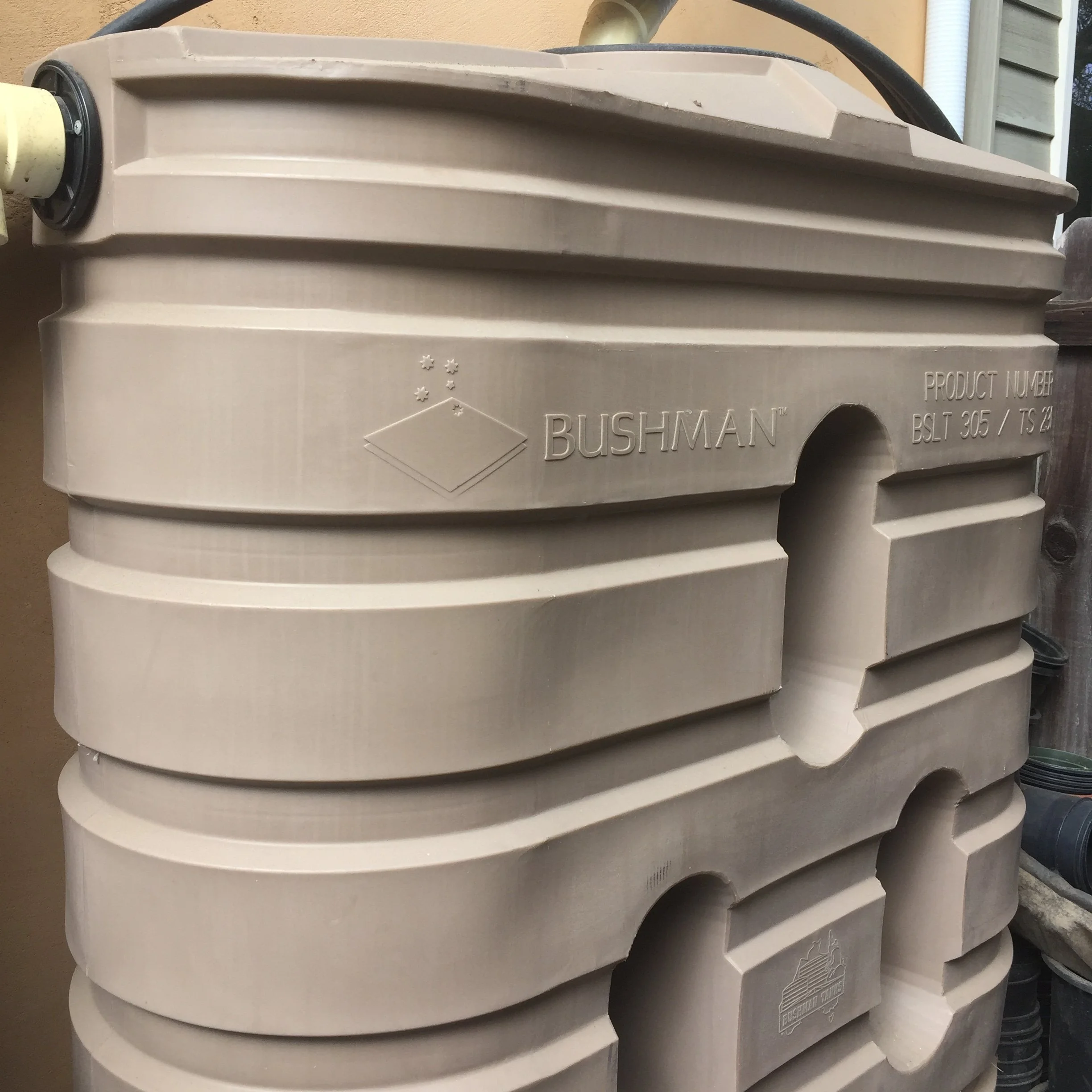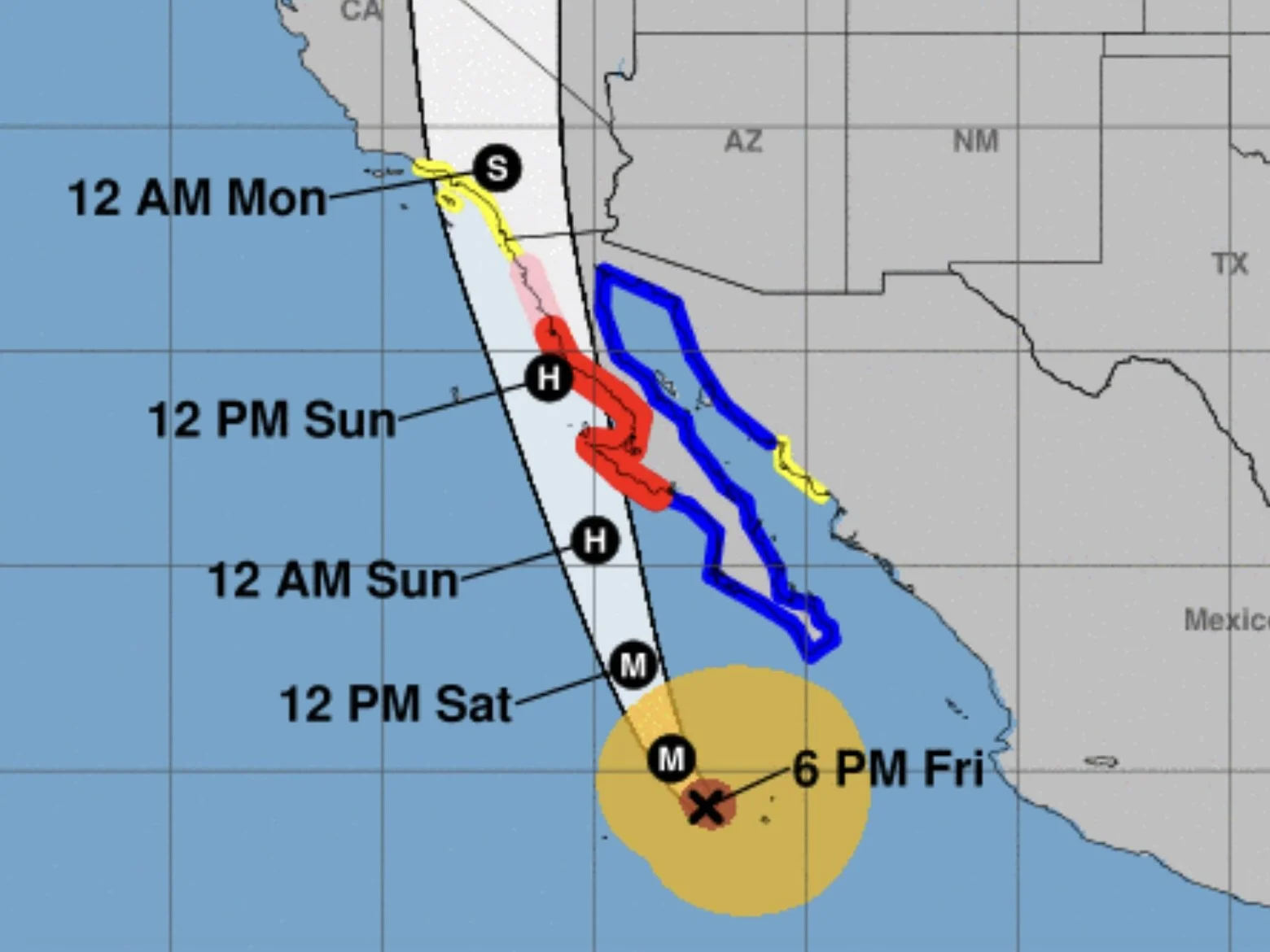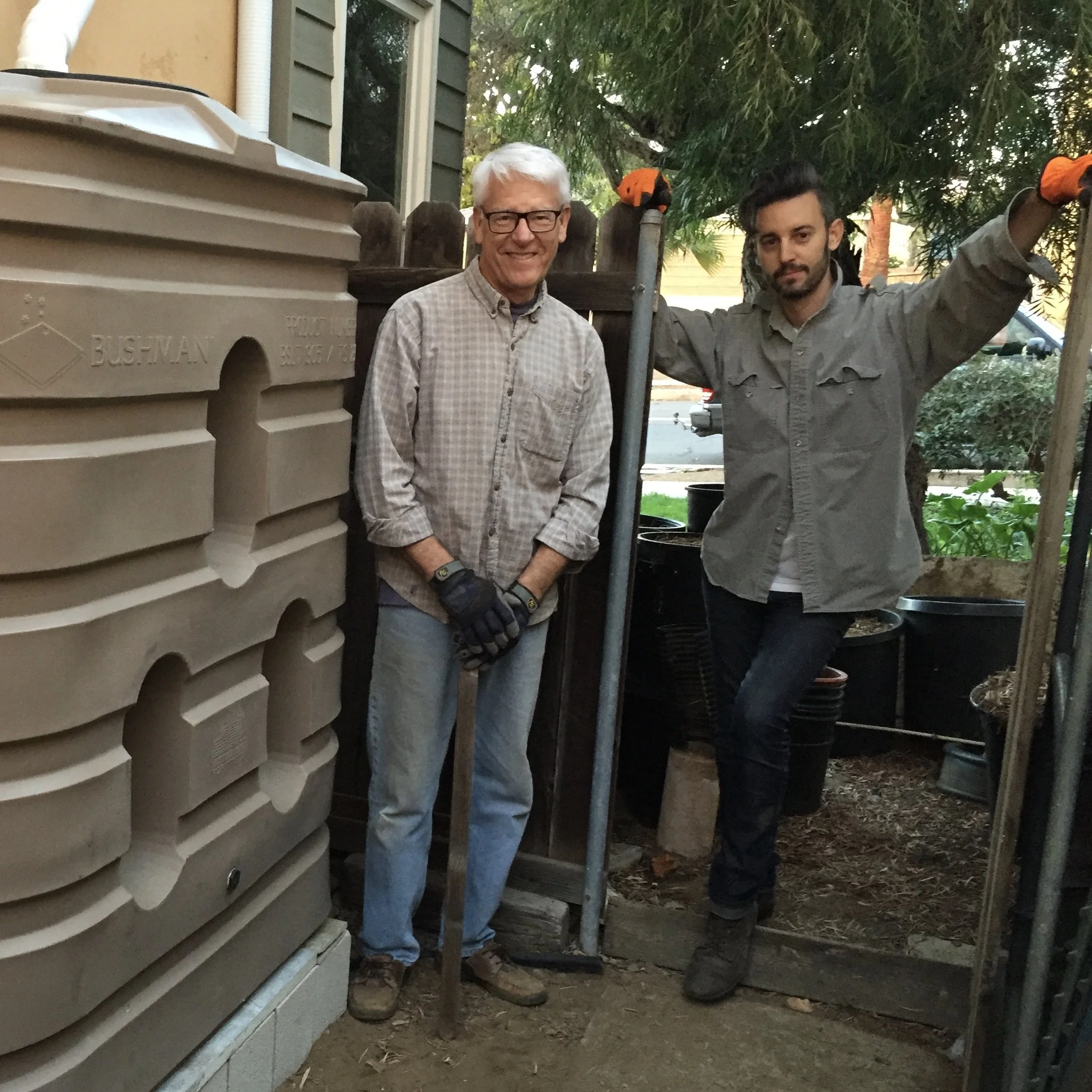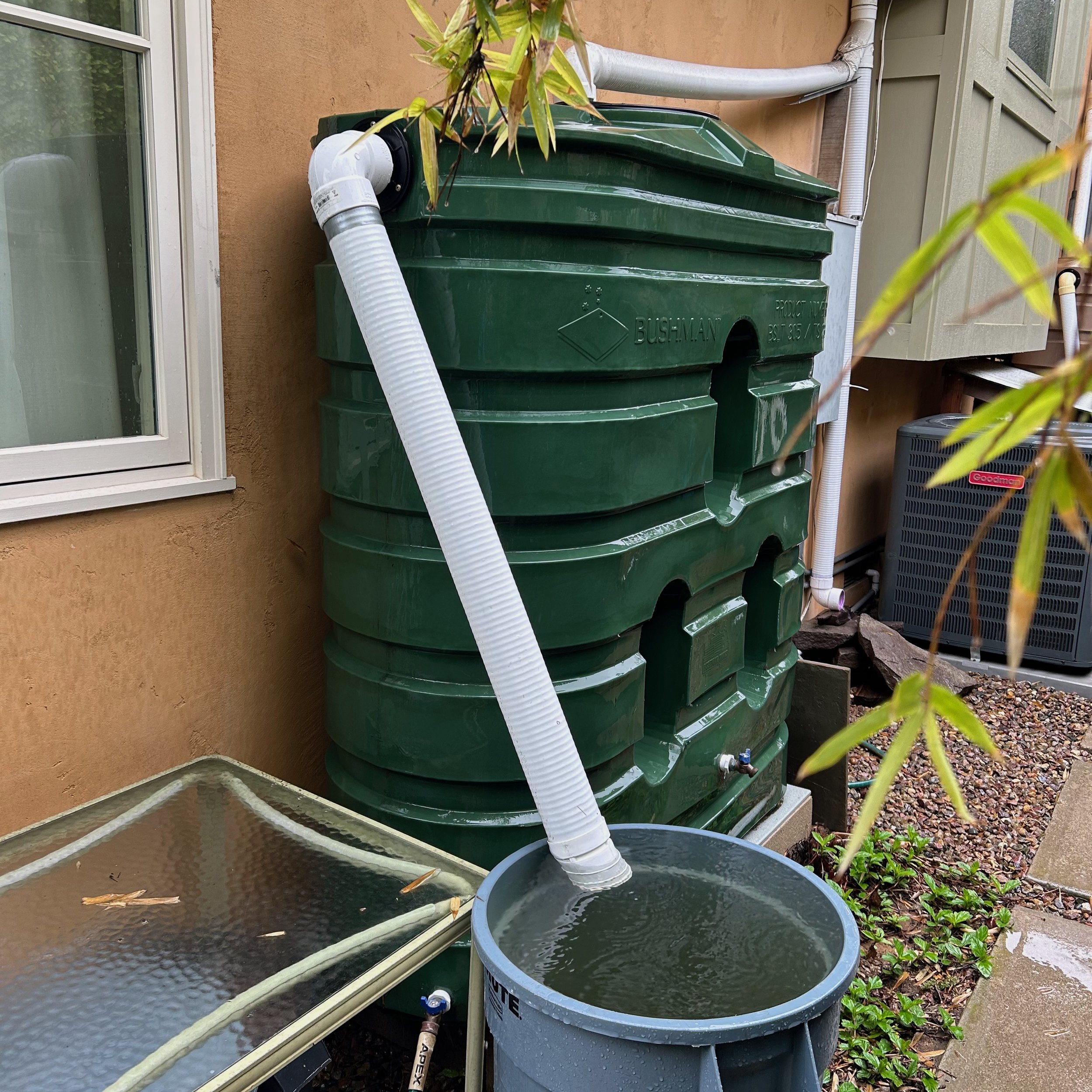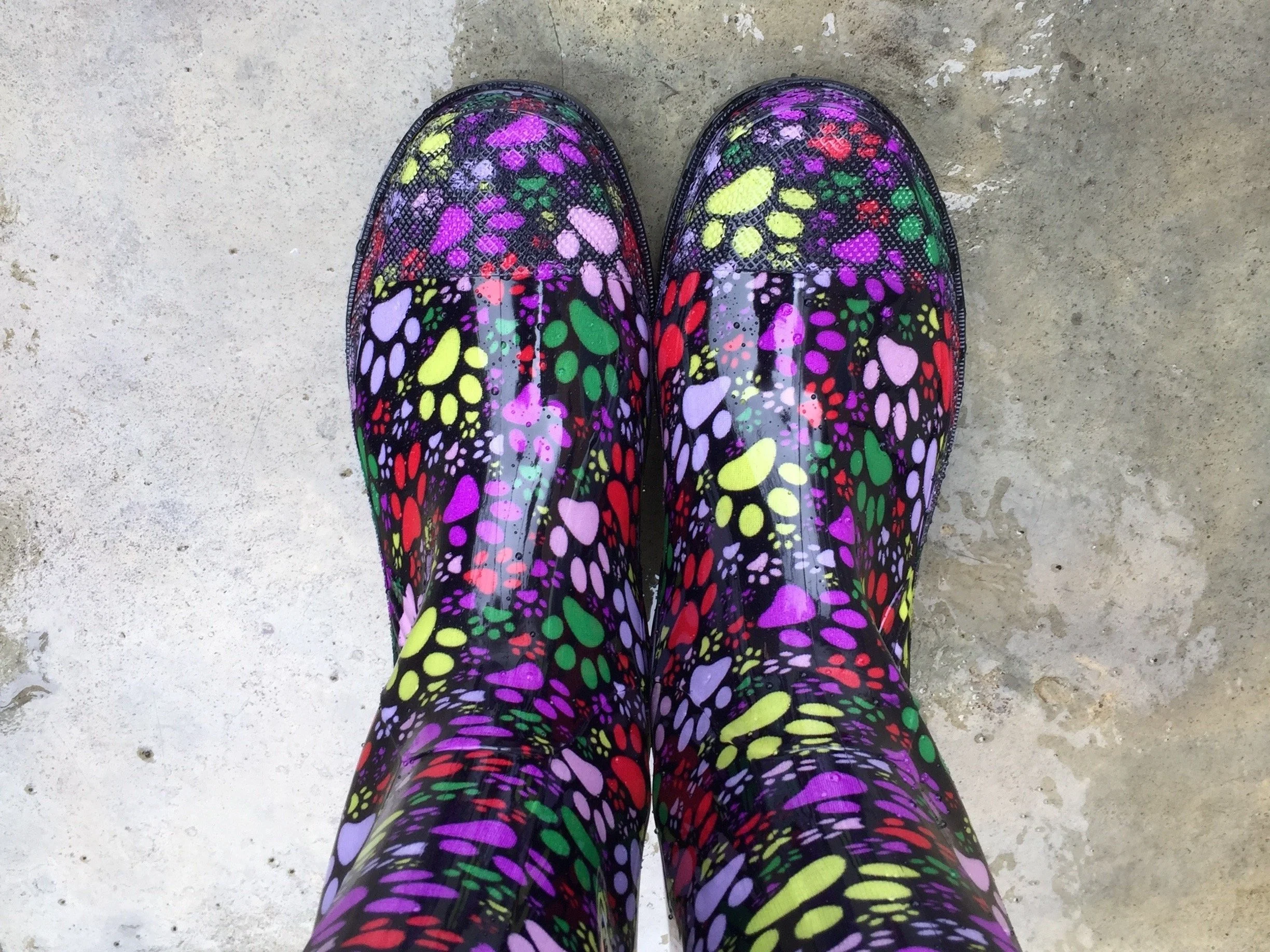Rainwater Harvesting
An unusual August “harvest” has come our way.
In the City of San Diego, seasonal rainfall averages about ten inches near the coast. Some recent drought years brought only three to six inches of rain. Eight-five percent of the rainfall occurs from November to March. This August is the wettest on record.
Tropical Storm Hilary brought an unexpected deluge. Anticipating this, we deployed thirteen rain barrels, checked the gutters and made sure all the connections for the rain tanks were functional.
There’s nothing like rainwater. Garden plants and weeds seem to prefer it. Rainwater collection methods can be simple and low tech. We chose plastic trash cans that catch the runoff from our 400 square foot metal garage roof. Here’s the math for 1 inch of rain: 10 cups/sq. ft x 400 square feet = 4000 cups or 250 gallons. Writing this near the storm’s passage, we’re at two inches of rain in the last 24 hours.
Currently, I have eight 32 gallon and two 44 gallon Rubbermaid Brute trash cans lined up near the vegetable garden.. They are #2 food grade plastic. By request, I’ve received them for birthdays and Christmas over the years. By storm’s end, I expect all to be full which totals 344 gallons plus another 50 gallons in the tall black can—almost 400 gallons.
After the rain, I cover the cans to prevent evaporation and mosquito breeding. Using a watering can, I irrigate the garden with the rainwater and consider it weightlifting. The “bottom of the barrel” is used on fruit trees so the water is filtered through the soil. Two cans have low spigots so a hose can be used for irrigation. At season’s end, we stack and store them in a shady corner behind a tall fruit tree.
In November 2015 we installed our first Bushman 305 gallon rain tank with rebates from local water authorities. Our son, Tim was a co-laborer. Enamored with the successful rain capture, we purchased an identical second tank four months later. They’re installed in a narrow area between the houses and mostly out of sight.
Because of the configuration of the rain gutters, the green tank fills first. When the overflow can is full we open the spigot at the bottom and drain the excess to a lawn area where there are five fruit trees nearby. The second best place to store rainwater is in the ground.
We were first inspired by Brad Lancaster’s Rainwater Harvesting for Drylands and Beyond and his inventive measures in Tucson, Arizona. An internet search will yield many other resources if you’re looking to capture rainwater.
If you’re in the San Diego area consider contacting RainThanks & Greywater. We were inspired by the owner’s rainwater collection projects at an open house of her property.
